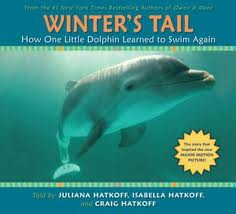So many of my book recommendations come from teachmentortexts.com, a website that links many bloggers and lets us all share what we have read over the week. I appreciate our hosts, Jen and Kellee for all of their recommendations and for their great blog hospitality!
 This week, I caught up on some of the titles that have been on my TBR list for a while. One of my favorites was Capture The Flag by Kate Messner. I really admire how well Kate knows her characters and how she shares that knowledge with her readers throughout her books. Even though Capture The Flag is plot-driven, the characters are multi-dimensional and become friends of readers as quickly as they become friends of each other within the pages. This book had a lot of hype and I was not disappointed. In fact, I wrapped it up and gave it to my nephew who is a tough book critic. We'll see what he says...
This week, I caught up on some of the titles that have been on my TBR list for a while. One of my favorites was Capture The Flag by Kate Messner. I really admire how well Kate knows her characters and how she shares that knowledge with her readers throughout her books. Even though Capture The Flag is plot-driven, the characters are multi-dimensional and become friends of readers as quickly as they become friends of each other within the pages. This book had a lot of hype and I was not disappointed. In fact, I wrapped it up and gave it to my nephew who is a tough book critic. We'll see what he says... I also read Kate Messner's Over and Under The Snow. What a beautiful picture book full of poetic language, imagery, intimate moments, and even knowledge about what a complex world of animal survival happens during the winter. I would use this book to teach about figurative language and focus, as well as about seasons and habitats.
I also read Kate Messner's Over and Under The Snow. What a beautiful picture book full of poetic language, imagery, intimate moments, and even knowledge about what a complex world of animal survival happens during the winter. I would use this book to teach about figurative language and focus, as well as about seasons and habitats. I started Horten's Miraculous Mechanisms by Lissa Evans over the summer and forgot it at the beach house, so when we went there for an overnight, I returned to it, re-reading the beginning. Maybe the hiatus impacted my enjoyment of this one, but I have to say that I struggled to get into it. I also really enjoyed the explanations of the magic so I was a little disappointed with the ending--I won't say more so that I don't give it away for people who are intending to read it. I would be curious about other people's reactions to the ending, though.
I started Horten's Miraculous Mechanisms by Lissa Evans over the summer and forgot it at the beach house, so when we went there for an overnight, I returned to it, re-reading the beginning. Maybe the hiatus impacted my enjoyment of this one, but I have to say that I struggled to get into it. I also really enjoyed the explanations of the magic so I was a little disappointed with the ending--I won't say more so that I don't give it away for people who are intending to read it. I would be curious about other people's reactions to the ending, though. We always visit a local book shop when we are in Rhode Island and I read many picture books while my girls decide on books. Yesterday, I read Eleanor Quiet No More by Doreen Rappaport and I loved reading about her. I think that Eleanor Roosevelt is such a strong role model for today's women, young and old, since she is someone who embraced her beliefs and shared them with a strong, but polite, voice. I love hearing stories about her life and this book is full of them.
We always visit a local book shop when we are in Rhode Island and I read many picture books while my girls decide on books. Yesterday, I read Eleanor Quiet No More by Doreen Rappaport and I loved reading about her. I think that Eleanor Roosevelt is such a strong role model for today's women, young and old, since she is someone who embraced her beliefs and shared them with a strong, but polite, voice. I love hearing stories about her life and this book is full of them.Happy New Year and Happy Reading!
Melanie







































